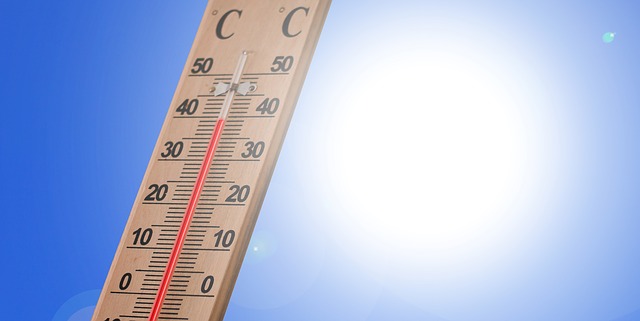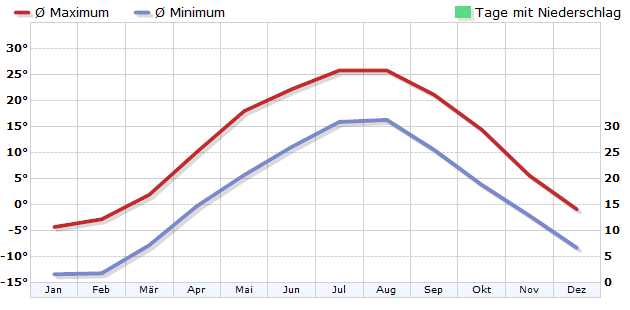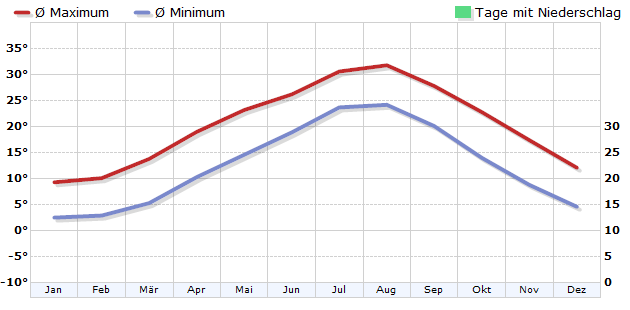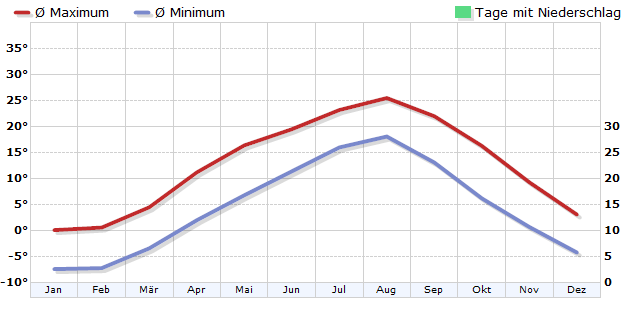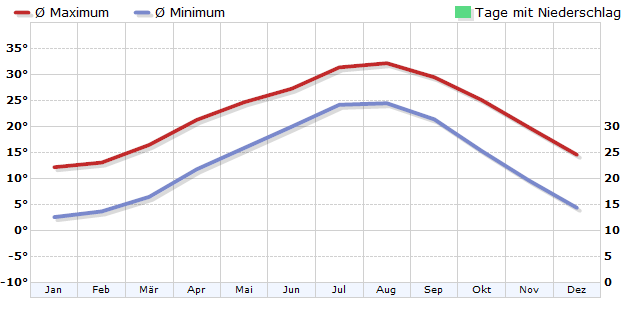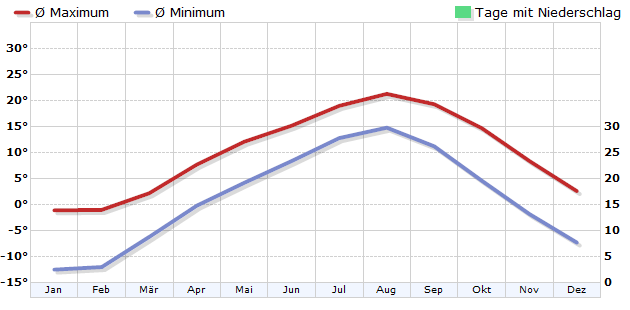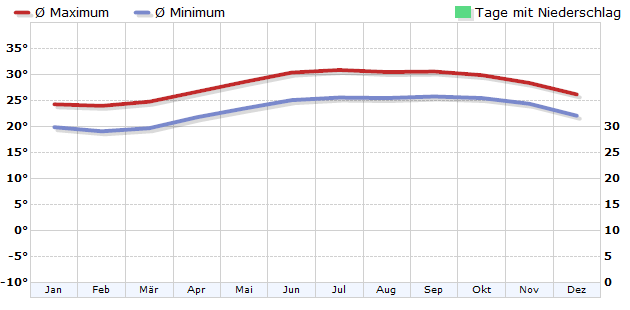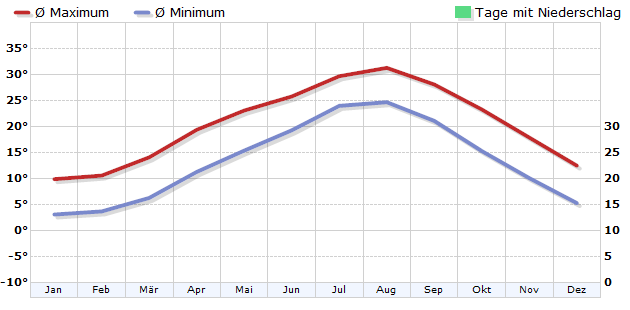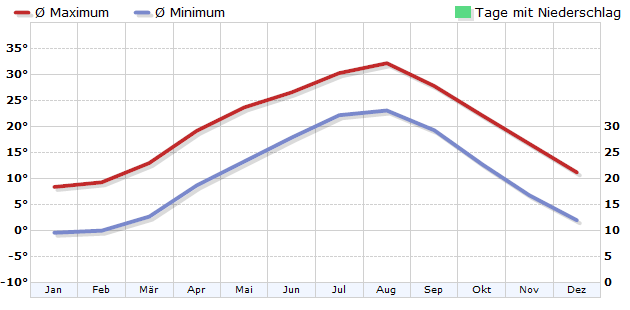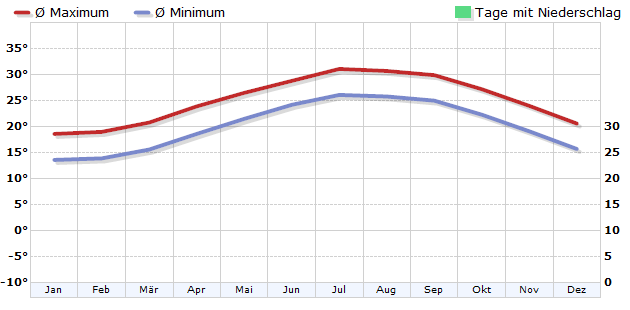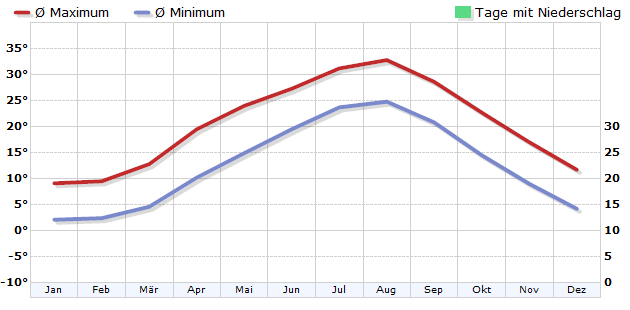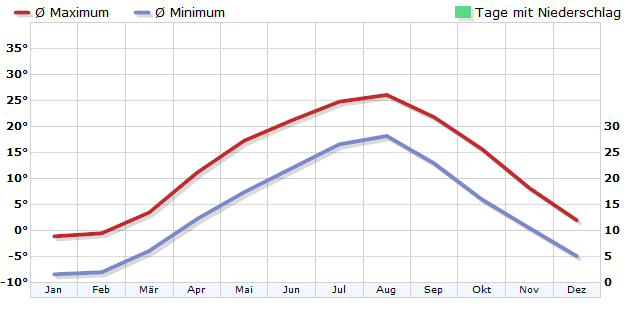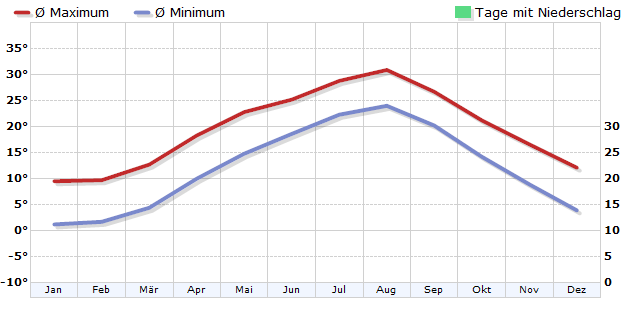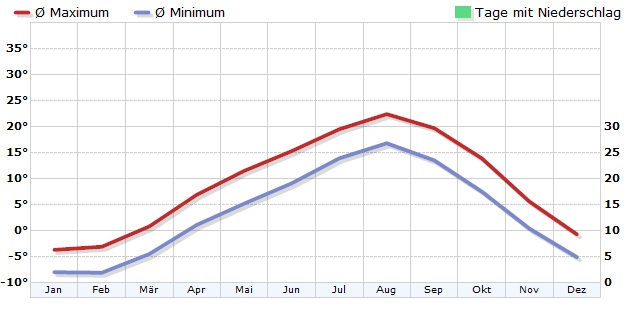Climate Japan
Due to its quite large north-south extension and prevailing winds, Japan has six different climate zones from the cool moderate north to the humid subtropical south. In all regions there is relatively much precipitation. In the north the annual precipitation sums lie around 1100 mm per square meter, in the south partly over 2000 mm. The predominant part of it goes down in the summer months, when the temperatures lie almost everywhere with warm 25 to 35 degrees. It is driest in the northernmost prefecture of Hokkaido. The winters are cold and long and the summers rather short but warm. On the west coast of Japan, heavy snowfalls often occur in winter. The summer months are somewhat cooler than on the eastern Pacific coast. In the central highlands of Japan there are strong temperature differences between day and night and between summer and winter. The precipitation is relatively low. A special climate can be found around the Seto inland lake. This region has a mild climate all year round. In the Pacific the summers are hot and very humid and the winters cool with only few snowfalls. The Ryukyu Islands in the south of the country have a subtropical climate with hot, humid summers and warm winters. They are particularly endangered by typhoons and heavy precipitation.
For trips to the island of Hokkaido, the months May to September are recommended due to the cooler climate. If you travel to the other regions you should choose spring or autumn because of the hot and sometimes humid summer months. From December to March, winter sports can be practised in the north at icy temperatures.
